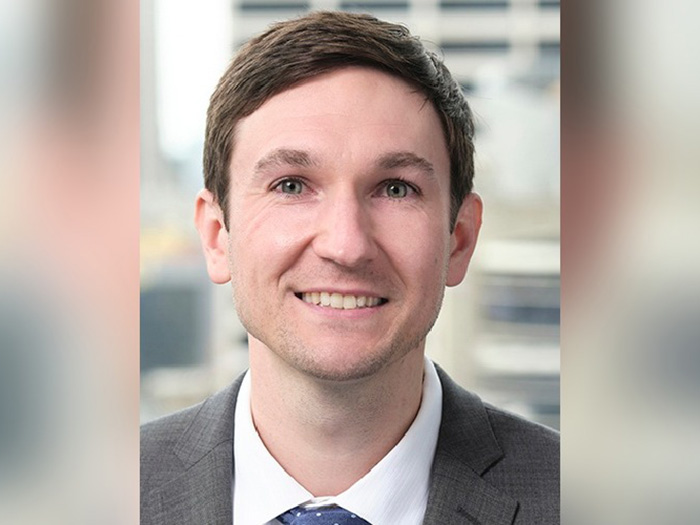This Retail Risk Manager Is Optimistic — But Realistic — About the Hardening Market
R&I: Can you describe how you got your start in risk management?
I started my risk management career at Ferro Corporation in Cleveland. Previously, I had worked as an insurance broker in the J&H property department in Chicago, which taught me the importance of customer service (and started a lifelong commitment to property loss control).
Thus, instead of working on multiple accounts as a broker, I now had one, but always keeping in mind that I was a service provider/facilitator. Without my corporate teammates who are involved in designing, manufacturing, selling, etc., there would be no need for my department’s services.
R&I: How has your organization’s risk profile changed over the past five years? What is driving that change?
It has changed in several ways. From a sales perspective, we have grown dramatically since 2013, going from $4.6B to $6.8B in sales, while more than tripling the percentage of international sales from 11% to 34%.
Much of this growth was due to multiple global acquisitions, primarily in Europe and Australasia from 2014 to 2018. As an apparel company, we are somewhat unique because we produce 80% of the items we sell in our own supply chain.
As a risk management department, we (along with our Marsh multinational team) have integrated these new members of the Hanes family into our risk and insurance programs. As an organization, there is far more work to be done when integrating new companies — including incorporating new apparel lines into our supply chain.
R&I: What do you see as one of the most critical risks facing your organization?
Reputational risk. In the era of social media and instant communications, adverse publicity can be disastrous. Fortunately, Hanesbrands has a very strong culture of corporate social responsibility.
R&I: How do you use technology to measure and track your company’s risks?
Because we are a department of two, we rely on our RMIS and real estate, accounting and HR databases, among others. As part of our property renewal process, we work with the Aon BI analysis team to provide annually updated BI values and MFLs.
R&I: Hardening has happened in some lines of insurance, but many say the traditional insurance cycles are dead. What’s your take on the insurance market? Are you optimistic or pessimistic?
Due to the infusion of capital and market capacity that has been created the last 10-plus years, I think that the inevitable hard market has been delayed, but it is very obviously there, as evidenced by what’s currently happening in property. I’m optimistic, but I’m also realistic. Insurers ultimately need to be profitable to survive. Focusing on differentiation and building strong relationships with brokers and underwriters helps mitigate the impact of market swings.
R&I: What was the most impactful challenge you’ve overcome in your career? What were the key lessons learned?
One of the greatest (and most rewarding) challenges was coming into this organization as it was being spun off as a stand-alone company by Sara Lee in 2006. The spin required setting up new programs and procedures, as risk management had previously been handled in Chicago. I was very fortunate to have great Aon brokers and an outstanding Sara Lee VP of risk management —Dan Redican — who sadly passed away in 2008. His team made the transition as smooth as possible.
During the several years following, we were consolidating eight separate divisions into one corporate entity and began the build-out of our supply chain in the eastern hemisphere. The key lesson learned was that institutional knowledge matters, even if the ultimate objective is to change/evolve.
R&I: What about this work do you find the most fulfilling or rewarding?
Interacting with folks from all around the world, both internally and externally, and having some of those relationships turn into lasting friendships.
R&I: What’s one aspect of your job you think people would find surprising?
If they’re in risk management, they already know that no two days are ever the same — and most days don’t happen according to plan.
R&I: What fascinates you about risk, risk management and the future of risk analytics?
I’m fascinated with AI and how it will impact risk management and insurance brokerages in the coming years. Data management, analysis and modeling already benefit from AI, and it will be interesting to watch as AI evolves into these fields. From a risk perspective, as the IoT continues to expand, so will the potential threats to data, reputation, etc.
R&I: What advice might you give to students or other aspiring risk managers?
Work hard, get good internal and external mentors along the way and learn as much as you can about all aspects of the company you’re working for or hope to work for.
R&I: What do your friends and family think you do?
Most have a pretty good understanding, but my husband initially thought I adjusted auto claims.
R&I: What is the riskiest activity you ever engaged in?
Hang gliding solo on Jockey’s Ridge in Nags Head on North Carolina’s Outer Banks.












